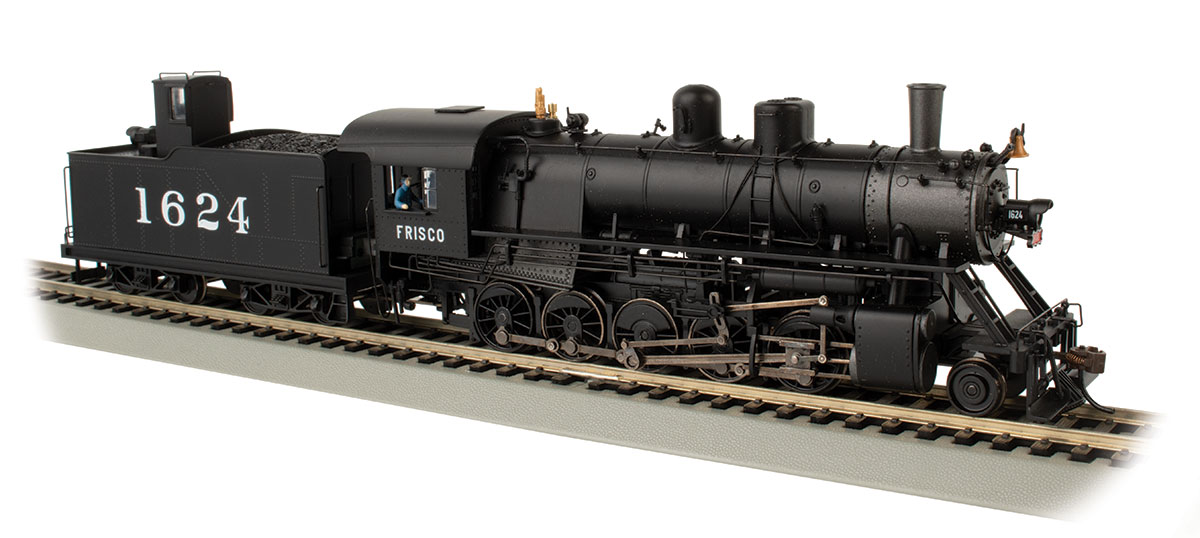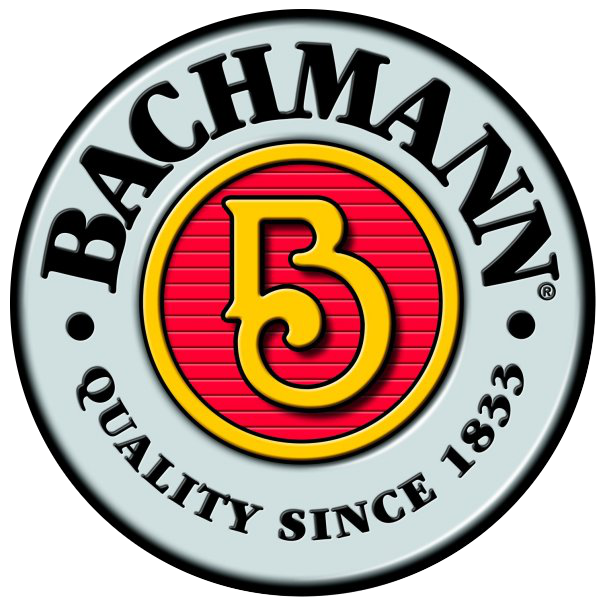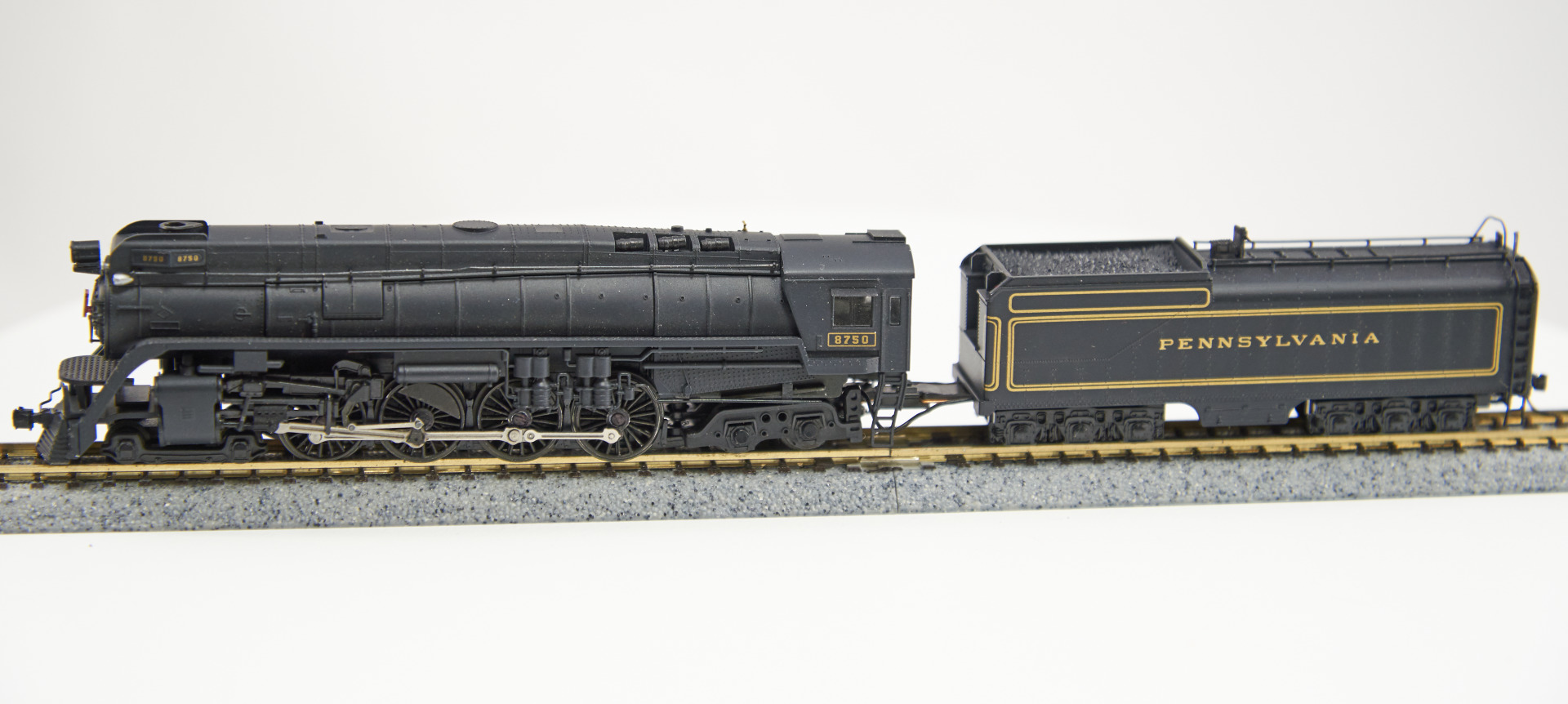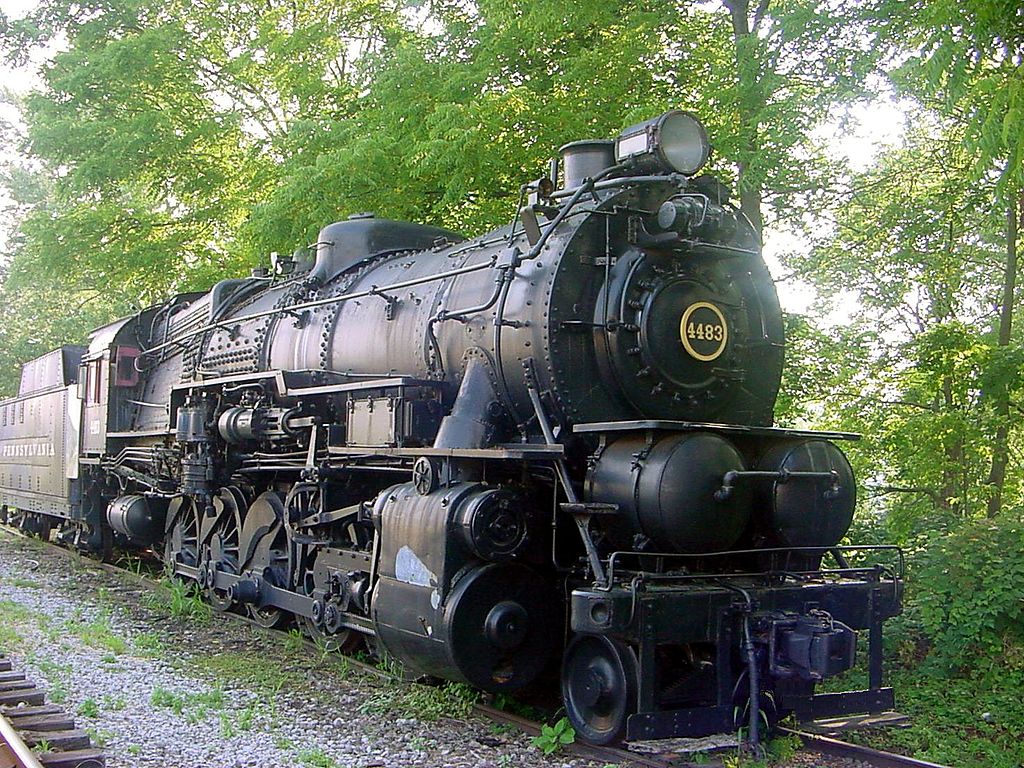Prototype Information: Under the Whyte notation for the classification of steam locomotives, 2-10-0 represents the wheel arrangement of two leading wheels on one axle, ten powered and coupled driving wheels on five axles, and no trailing wheels. This arrangement was often named Decapod, especially in the United States, although this name was sometimes applied to locomotives of 0-10-0 "Ten-Coupled" arrangement, particularly in the United Kingdom. In the United States, the 2-10-0 was not widely popular but was a favorite of a small number of railroads which operated mostly in mountainous terrain. Among these was the Erie Railroad, a major Chicago to New York trunk line railroad.
The 2-10-0's main advantage was that five out of six of its axles were powered, meaning almost all the weight was available for traction rather than being distributed over pilot and trailing wheels. The long rigid wheelbase caused problems on tightly curved track, so blind drivers were the norm, either on the central axle, and/or on the second and/or fourth axles. Often lateral motion devices were attached to the leading drive axle.
The wheel arrangement's disadvantages included the firebox size restriction caused by the lack of trailing wheel. This meant the firebox was fitted in between the wheels (common on earlier locomotives) and was long and narrow, or if mounted above the driving wheels, was wide and long but shallow. Many locomotives chose the latter option. A firebox mounted over the drivers also restricted the diameter of the driving wheels, which in turn limited speed. As with the Consolidation (2-8-0), "chopping" at speed ensured a rough ride for the crew due to instability caused by the wheel arrangement. In fact, backing any locomotive without a trailing axle was restricted to under twenty miles per hour or less. Most 2-10-0s were not operated at speeds greater than 50 mph (80 km/h).
From Wikipedia
The 2-10-0's main advantage was that five out of six of its axles were powered, meaning almost all the weight was available for traction rather than being distributed over pilot and trailing wheels. The long rigid wheelbase caused problems on tightly curved track, so blind drivers were the norm, either on the central axle, and/or on the second and/or fourth axles. Often lateral motion devices were attached to the leading drive axle.
The wheel arrangement's disadvantages included the firebox size restriction caused by the lack of trailing wheel. This meant the firebox was fitted in between the wheels (common on earlier locomotives) and was long and narrow, or if mounted above the driving wheels, was wide and long but shallow. Many locomotives chose the latter option. A firebox mounted over the drivers also restricted the diameter of the driving wheels, which in turn limited speed. As with the Consolidation (2-8-0), "chopping" at speed ensured a rough ride for the crew due to instability caused by the wheel arrangement. In fact, backing any locomotive without a trailing axle was restricted to under twenty miles per hour or less. Most 2-10-0s were not operated at speeds greater than 50 mph (80 km/h).
From Wikipedia
Road/Company Information: 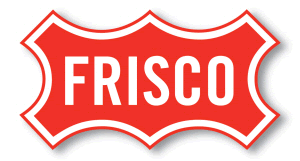 The St. Louis - San Francisco Railway (reporting mark SLSF), also known as the Frisco, was a railroad that operated in the Midwest and South Central U.S. from 1876 to April 17, 1980. At the end of 1970 it operated 4,547 miles (7,318 km) of road on 6,574 miles (10,580 km) miles of track, not including subsidiaries Quanah, Acme and Pacific Railway or the Alabama, Tennessee and Northern Railroad; that year it reported 12,795 million ton-miles of revenue freight and no passengers. It was purchased and absorbed into the Burlington Northern Railroad in 1980.
The St. Louis - San Francisco Railway (reporting mark SLSF), also known as the Frisco, was a railroad that operated in the Midwest and South Central U.S. from 1876 to April 17, 1980. At the end of 1970 it operated 4,547 miles (7,318 km) of road on 6,574 miles (10,580 km) miles of track, not including subsidiaries Quanah, Acme and Pacific Railway or the Alabama, Tennessee and Northern Railroad; that year it reported 12,795 million ton-miles of revenue freight and no passengers. It was purchased and absorbed into the Burlington Northern Railroad in 1980.
The St. Louis - San Francisco Railway was incorporated in Missouri on September 7, 1876. It was formed from the Missouri Division and Central Division of the Atlantic and Pacific Railroad. This land grant line was one of two railroads (the other being the M-K-T) authorized to build across Indian Territory. The Atchison, Topeka and Santa Fe Railroad, ATSF, interested in the A & P right of way across the Mojave Desert to California, took the road over until the larger road went bankrupt in 1893; the receivers retained the western right of way but divested the ATSF of the St. Louis-San Francisco mileage on the great plains. After bankruptcy the Frisco emerged as the St. Louis and San Francisco Railroad, incorporated on June 29, 1896, which also went bankrupt. On August 24, 1916 the company was reorganized as the St. Louis - San Francisco Railway, though the line never went west of Texas, being more than 1,000 miles (1,600 km) from San Francisco.
From Wikipedia

The St. Louis - San Francisco Railway was incorporated in Missouri on September 7, 1876. It was formed from the Missouri Division and Central Division of the Atlantic and Pacific Railroad. This land grant line was one of two railroads (the other being the M-K-T) authorized to build across Indian Territory. The Atchison, Topeka and Santa Fe Railroad, ATSF, interested in the A & P right of way across the Mojave Desert to California, took the road over until the larger road went bankrupt in 1893; the receivers retained the western right of way but divested the ATSF of the St. Louis-San Francisco mileage on the great plains. After bankruptcy the Frisco emerged as the St. Louis and San Francisco Railroad, incorporated on June 29, 1896, which also went bankrupt. On August 24, 1916 the company was reorganized as the St. Louis - San Francisco Railway, though the line never went west of Texas, being more than 1,000 miles (1,600 km) from San Francisco.
From Wikipedia
Brand/Importer Information: Bachmann Industries (Bachmann Brothers, Inc.) is a Bermuda registered Chinese owned company, globally headquartered in Hong Kong; specialising in model railroading.
Founded in Philadelphia, Pennsylvania, the home of its North American headquarters, Bachmann is today part of the Kader group, who model products are made at a Chinese Government joint-venture plant in Dongguan, China. Bachmann's brand is the largest seller, in terms of volume, of model trains in the world.[citation needed] Bachmann primarily specializes in entry level train sets, and premium offerings in many scales. The Spectrum line is the high quality, model railroad product line, offered in N, HO, Large Scale, On30, and Williams O gauge all aimed for the hobbyist market. Bachmann is the producer of the famous railroad village product line known as "Plasticville." The turnover for Bachmann model trains for the year ended 31 December 2006 was approximately $46.87 million, a slight increase of 3.36% as compared to 2005.
Founded in Philadelphia, Pennsylvania, the home of its North American headquarters, Bachmann is today part of the Kader group, who model products are made at a Chinese Government joint-venture plant in Dongguan, China. Bachmann's brand is the largest seller, in terms of volume, of model trains in the world.[citation needed] Bachmann primarily specializes in entry level train sets, and premium offerings in many scales. The Spectrum line is the high quality, model railroad product line, offered in N, HO, Large Scale, On30, and Williams O gauge all aimed for the hobbyist market. Bachmann is the producer of the famous railroad village product line known as "Plasticville." The turnover for Bachmann model trains for the year ended 31 December 2006 was approximately $46.87 million, a slight increase of 3.36% as compared to 2005.
Item created by: gdm on 2020-01-27 13:50:24
If you see errors or missing data in this entry, please feel free to log in and edit it. Anyone with a Gmail account can log in instantly.
If you see errors or missing data in this entry, please feel free to log in and edit it. Anyone with a Gmail account can log in instantly.


